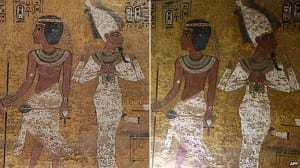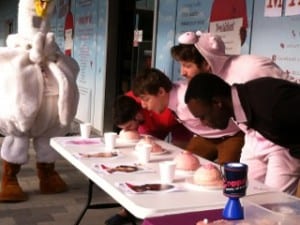PHd crisis? I don’t think I can manage another one 🙁 The process of narrowing down my research focus is taking forever. I’ve enough dead ends to populate a cemetery.
The solstice is coming. The coldest, darkest place in the year. This is the time…. for reflection. Reading my PhD log back to 23 January 2013 has depressed me. It confirms the absence of essential literature on digital pedagogy and staff development. Surrounded with piles of books I haven’t read, and hundreds of thousands of words I’ll probably never use (I am prolific in one area at least), my reflection on the year’s progress isn’t reasuring. In spite of evenings and weekends of clandestine relationships. Me and my laptop. Me and the internet. Me and the accusations – Oh god, you’re not working again.
A year of trying to find myself philosophically. I have to face facts. My PhD has got lost. I need to rethink and restart.
My research is like water. It spreads. Isn’t contained. I may have said this before. For the past year I’ve been trying to get a foothold. An ontological and epistemological position. Some of it has been positive but I haven’t got there yet. My feet are still looking for their philosophical standing place.
Positives include rediscovering postmodernism. When academics began their deconstruction of reality, the internet didn’t exist, Today digital reality is endemic yet few people talk about postmodernism. I’d like to apply a postmodern lens to the presentation of self online, to reconstruct my 3P model of Professional, Personal and Public identities, but this would be a research byproduct, not the primary function. I need a practical solution to embedding research into my practice.
Times change. I shifted my PhD focus from the community (year 1) to the HE sector (year 2) to my practice (year 3). Maybe I wrong footed myself from the start because with every passing year the panic has increased. Maybe I’m simply not good enough. I wanted a research topic which informed and enhanced my practice. What’s wrong with that? Not finding my doctoral feet feels like a failure. I’ve read the books, gone to the workshops and study schools, but still can’t find a fit. I talk about digital exclusion and people switch off. Maybe it’s the way I say it. I don’t know. But exclusion and its invisibility is my thing and at the start of this year I thought I’d found a research space to slip into.
With regard to teaching and learning, I knew engagement with a VLE was an under-researched area. The VLE is unpopular, maligned as clunky and linear, unfairly compared to more visual software like Wordpress, used predominantly as a document repository and largely ignored as a tool for enabling and enhancing learning. Embedding virtual pedagogy into my PhD would not only shift my practice from being research-informed to research-engaged, it would show case the VLE’s pedagogic potential. I’m pragmatic. I work in the present where the application of theory to practice matters. As does the day-to-day experience of staff and students doing the best they can with the tools they have.
Recent discussions around digital education and the VLE at Lincoln seem to confirm I’ve got lost in the PhD landscape – again. The sense of loss is reinforced through Teaching and Learning in a Digital Age (TELEDA) which stretches use of Blackboard and reminds me of a need to embed digital literacies into staff development and teacher education as well as the curriculum. This is where I want my research to be focused but I’m not sure how to get there. My action research methodology needs grounding in the relevant literature. It’s looking like I need the end of year break to begin a new review with a focus on staff development in higher education, on the pragmatic and pedagogical aspects of digital education rather than the political. What value can be extracted from failure? Once more, I’m about to find out.
Hello laptop. Hello internet. Do you come here often?















